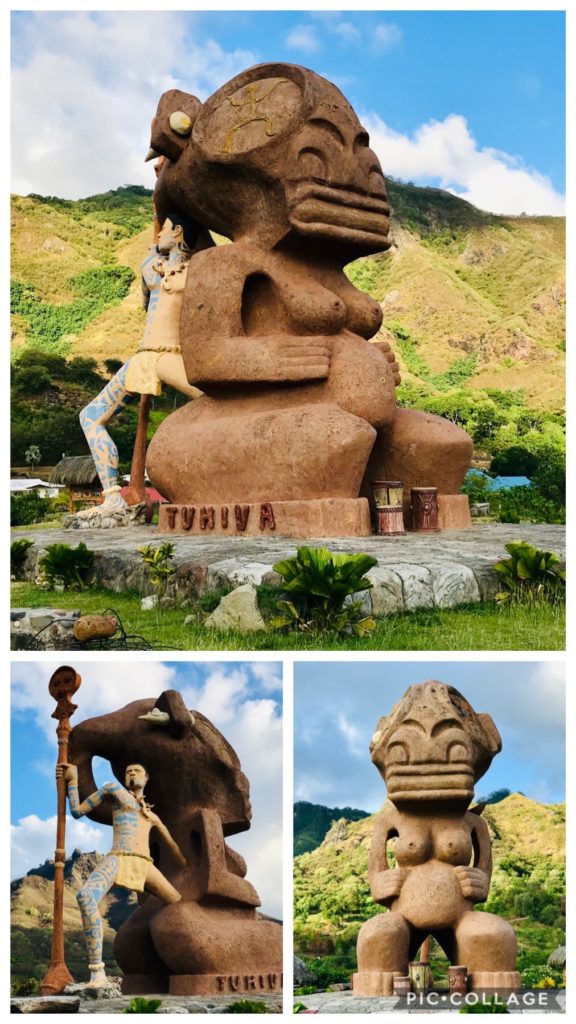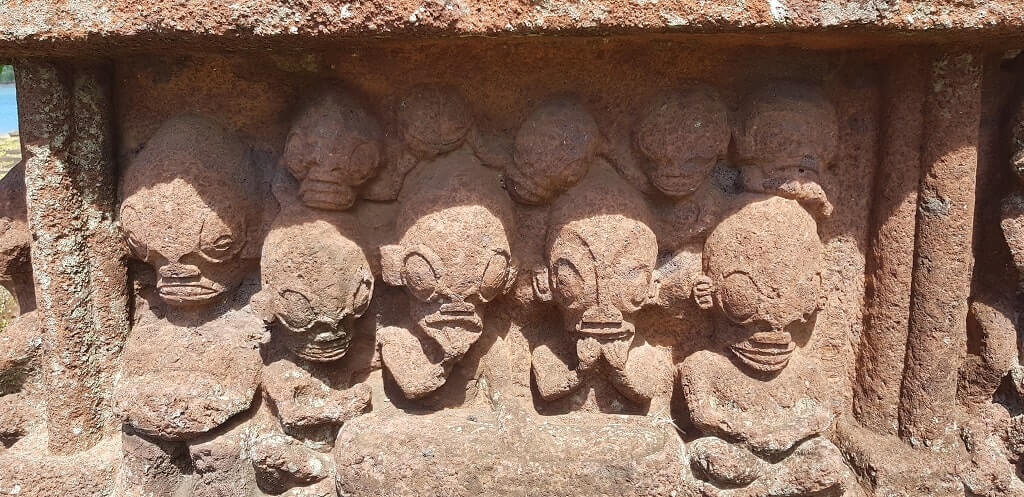Nuku Hiva, the largest island in the Marquesas Islands of French Polynesia, is renowned not only for its stunning scenery and vibrant culture but also for its intriguing array of ancient stone monuments, primarily found in Temehea Tohua. These structures, which date from the 11th to the 14th centuries, are thought to represent the gods revered by the ancient Nuku Hivan people. The enigma surrounding these monuments has piqued the interest of historians, archaeologists, and even UFO enthusiasts, establishing Nuku Hiva as a site of significant cultural and historical importance.

Nuku Hiva: A Window into Its Rich History
Nuku Hiva’s history is deeply woven with myths and traditions. Local tales tell of Ono, the creation god, who supposedly fashioned the Marquesas Islands as a grand residence for his wife in just one day. Nuku Hiva, being the largest island, is said to symbolize the roof of this legendary abode, while Ua Huka represents the leftover materials from its construction.
Historians believe that the first inhabitants of Nuku Hiva arrived approximately 2,000 years ago, migrating from other regions of western Polynesia, including Samoa. The island was once divided into two provinces, Te L’i and Tai Pi, and was home to nearly 100,000 people. This substantial population led to difficulties in housing and food production, making fishing an essential aspect of community life. Throughout history, there have been unverified rumors of cannibalism during periods of scarcity.

Over the years, Nuku Hiva encountered explorers such as the Spanish navigator Álvaro de Mendaña de Neira in 1595 and British explorer James Cook in 1774. These visits introduced new ideas and trade possibilities but also resulted in devastating epidemics that decimated over 90% of the indigenous population by the 19th century. France assumed control of the island in 1842, and by 1946, French Polynesia, including Nuku Hiva, was designated an overseas territory of France.
A Contemporary Polynesian Paradise

Today, Nuku Hiva is a verdant paradise with a population of around 3,210 as of 2017. The island features diverse topography, including deep northern bays, eastern villages, and the central To’ovi’I plateau where cattle are raised. It boasts the Vaipo Waterfall, the tallest waterfall in Polynesia outside of Hawaii and New Zealand, cascading down 1,148 feet (350 meters).
The lifestyle of Nuku Hivans is closely tied to natural resources and a strong community spirit. Their diet primarily consists of locally grown and imported fruits and vegetables, with rice serving as the staple grain. Goat and fish are common protein sources, while pork and beef have become increasingly popular due to local cattle farming.

While ancient Nuku Hivans worshipped multiple deities, modern residents largely identify as Christian—a transformation influenced by European colonization and missionary activities. The island is dotted with churches, notably the Cathedral of Our Lady of the Marquesas Islands located near the capital, Taiohae.
The Mysterious Monuments: Deities or Aliens?
The ancient stone monuments of Nuku Hiva, uncovered by archaeologists in the early 1900s, provide a captivating look into the island’s distant past. Crafted from red clay and volcanic rock, these statues are impressively preserved and exhibit the artistry of the ancient Nuku Hivans. They share common traits such as large heads, prominent eyes, and short bodies with limbs; some are adorned in traditional attire while others remain bare.

The tallest statue, named after the island itself, rises 2.5 meters (8.2 ft) high. Known locally as “tikami,” these monuments served various functions—from providing blessings and healing to offering protection against intruders. While historians link these statues to a specific artistic style of their era, some UFO researchers suggest that their reptilian features and disproportionate forms could indicate contact with extraterrestrial beings.
Preservation of the Gods: Nuku Hiva and UNESCO
Efforts to preserve Nuku Hiva’s rich cultural legacy are ongoing. In 2021, the Marquesas Islands—including Nuku Hiva—sought UNESCO World Heritage status to secure resources for protecting its ancient stone deities and other cultural assets. However, this initiative has faced resistance from some locals and politicians who argue that Polynesians can protect their heritage independently and fear it may be a tactic for France to reinforce its claims over the islands.

Despite these obstacles, safeguarding Nuku Hiva’s cultural monuments remains a key priority. The importance of these ancient statues, which illuminate the island’s enigmatic history, is immeasurable.
Conclusion
The captivating stone monuments of Nuku Hiva continue to inspire fascination among historians, archaeologists, and inquisitive travelers alike. As the island forges its future while honoring its past, these ancient statues serve as lasting emblems of Nuku Hiva’s rich cultural heritage. Whether regarded as representations of deities or evidence of extraterrestrial encounters, the stone monuments remind us of the island’s unique standing in Polynesian history and beyond.

